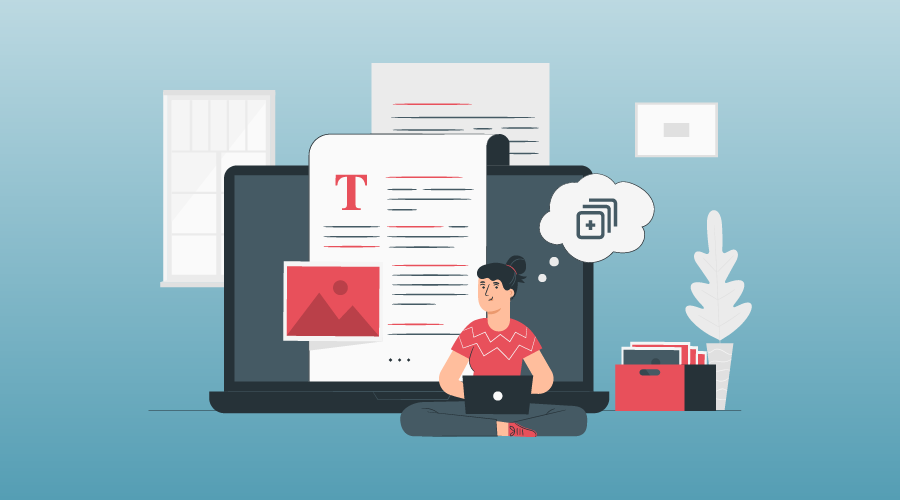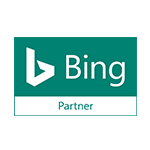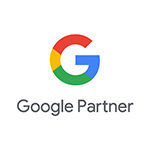Canonical Tags : A Beginners Guide to Avoid Duplicate Content Issues

Have you ever heard the word “canon” when describing a story or when referencing the plot of a film? In this sense, canon is meant to signify the preferred version that has been accepted by a fan base. You will still be surprised to learn that canon can also be used when discussing the elements found within a website. What are we talking about here? Yes, it’s canonical tags. Out of all the SEO terms in existence, there is no doubt that the use of canonical tags and links can often be confusing. However, this strategy can have a massive impact on your online presence and it deserves a closer look. Let’s break it down into easily digestible sections.
In This Post
What are Canonical Links?
In technical jargon, this term is often written as “rel=canonical”. Don’t let this confuse you if you are not overly familiar with HTML coding. Simply stated, a canonical tag is a way of highlighting the preferred version of a certain webpage. Of course, this might not be relevant for sites consisting of a handful of pages. It becomes extremely important when dealing with larger portals.
When are Canonical Tags a Good Idea?
Now that we have a basic understanding of what canonical tags represent, we need to answer another important question. When might they be needed? As mentioned above, they are used to highlight which page is the preferred URL if duplicate content happens to be present. An example will help to cement this point before we move on.
Let’s take a relevant example, it will help you understand the entire concept more clearly.
Let’s say you have an online store and having an eCommerce product page called, abc.com/product-a
You can access this product through a number of URLs including
- abc.com/allproducts/product-a
- abc.com/top-selling-products/product-a
- abc.com/products-priced-above-100/product-a
It is possible for the same content to appear under several different URLs. The canonical URL should be added in the head section of the duplicate pages in order to inform search engines that the URL has been changed.
Therefore, all three duplicate content pages will include the following canonical tag in the
section and the URL will look like :![]()
The SEO Benefits of this Practice
In terms of search engine optimization, the advantages should become clear. Still, a caveat needs to be mentioned. As opposed to popular belief, Google will not penalize a website simply because the same content happens to appear across multiple pages. However, this search engine will take action if it suspects that internal content was replicated in an attempt to manipulate SERP rankings. The only issue here is that it can be difficult to know the difference and unfortunately, even search engines make mistakes from time to time.
So, adding canonical URL tags will display which page is the most important (we can think of this page as a digital hub and other identical URLs as the spokes found around its circumference). Web crawlers will therefore understand that the different versions of this content are all “pointing” to a single page. The bottom line is that you can avert any unintentional penalties while still providing your visitors with pertinent information.
What is the Difference Between a 301 Redirect and a Canonical Tag?
301 redirects are codes intended to tell search engines that a web page has been permanently relocated. If your browser encounters a 301 redirect, it will automatically navigate to the new page location. 301 redirects are often logical for specific situations such as:
- If a domain name has been permanently changed.
- The content within an existing page is no longer relevant.
- A 404 error has occurred.
We can now see that canonical tags are slightly different from their 301 counterparts. Not only are they used to signal which page is the most relevant when dealing with duplicate material, but they can be employed if 301 redirects are not possible.
Why You Should Use Canonical URLs
So, what are some of the other reasons why canonical tags are important? From a practical point of view, we already know that these codes are meant to tell search engines which page is the most important. However, other advantages need to be mentioned.
From the perspective of a website owner, canonical tags will also enable you to choose which page you want to display within a search engine results page. If we refer to the fictional SEO company mentioned earlier, this makes a great deal of sense.
Let’s imagine that the majority of your SEO services are based throughout Kensington. However, you have recently expanded into other boroughs of London. In this case, you can utilize the Kensington page as the canonical URL (as it likely contains the most amount of information). You will still be able to embed similar content within the other URLs without worrying about penalties.
Another lesser-known benefit of canonical tags is associated with the end-user experience. It is much easier to create discrete web pages that revolve around a central topic. This is in direct contrast to having to modify a host of URLs, as navigation may become more challenging. We should also mention that canonical tags can represent great tools when creating evergreen content as they will provide yet another means for your website to attract additional exposure.
On a final note, analytics can benefit from the presence of these tags. Websites associated with a ridiculous number of URLs can be much more difficult to track. You might also find it challenging to consolidate important metrics and KPIs (key performance indicators) so that they can be interpreted. Canonical tags help to keep things straightforward.
Canonicalization: The Best Practices to Keep in Mind
We have now developed a well-rounded appreciation of why canonical tags can represent the “wizard behind the curtain” in terms of SEO and HTML. Still, highlighting the best practices will help to ensure that you start in the right direction. What do the experts have to say?
Use the Entire URL When Creating a Tag
One mistake is to use only a partial URL when creating a canonical tag. While this is technically permitted, there is always a chance that the HTML will not be interpreted correctly by the search engine. So, be sure to use the entire address. Here is an example:
Try to Use All Lowercase Characters Within a Canonical URL
Although it might not appear to be very important, uppercase and lowercase letters can have an impact on how search engines such as Google define the content within a page. This is why it is a good idea to employ all lowercase characters when creating a new canonical URL; it will help to avoid unnecessary confusion.
Keep an Eye on SSL Requirements
While many articles have rightfully focused on the benefits of cloud-based security, we need to remember that websites are just as vulnerable to malicious attacks. Therefore, sites should always be equipped with the Secure Sockets Layer (SSL) protocol. Of course, this is also the difference between the HTTP:// and the HTTPS:// prefix.
The issue here is that search engines may become confused by the two different prefixes and as a result, errors can occur. Always be sure to check the exact spelling of the URL before confirming any canonical changes.
Employ a Single Tag Per Page
A final recommendation to keep in mind involves the number of canonical tags associated with a specific page. In this case, more is certainly not better. If you use more than one tag to define a page, Google will ignore both. So, stick with a single tag to avoid any potential headaches along the way.
Common Mistakes to Avoid
In the same respect, there are a handful of canonical errors that can quickly lead to issues if they are not recognized at an early stage. Let us take some time to list some common mistakes.
Attaching a Canonical Tag to the First Page Within a Series
What if you are creating an article that will span several pages? In this case, never designate any subsequent pages (from the second page onwards) with a canonical tag. As the information itself is not duplicate, any pages labeled as canonical will not appear within the search engine results.
Creating Canonical Landing or Category Pages that Link to a Featured Article
Let’s once again use the example of our fictional SEO company. Perhaps you intend to write about different types of content marketing regularly. One day you focus on quality content creation and the next post involves how to choose the most appropriate keywords.
Because some pages may contain nearly identical content, you choose to add a canonical reference to the original article. Once again, this would block your keyword content from being featured within a search engine results page. Why does this occur? We need to remember that canonical URLs signal that you prefer to display a specific page. In other words, you would have self-sabotaged your content creation efforts. Featured articles should normally not require canonical tags.
Creating Multiple Canonical Tags Within a Single URL
Whether resulting from a mistake or simple oversight, this is another error to highlight. There are times when webmasters may inadvertently place more than one canonical tag within the HTML code of a specific URL. Search engine crawlers will become confused and ultimately, they may ignore the coding altogether. This once again opens the possibility that penalties may be incurred.
Therefore, it is always a good idea to carefully review the source code of every page when creating a new canonical URL. Determine that there is only a single “ref=canonical” string contained within.
Canonical Tags: Powerful Tools at Your Disposal
The truth of the matter is that many website owners (and indeed many webmasters) are not entirely certain as to how canonical tags function. Although these elements might not be relevant if you own a small website, they are undoubtedly important when dealing with a larger digital footprint. Let’s also remember that canonical tags will provide you with the room to expand without having to worry about misinterpretations by search engines such as Google and Bing.
The good news is that the concept itself is easy to understand if we can cut through the technical “fluff”. There can still be times when a question happens to arise. In this case, it is best to refer to trusted reference guides such as this comprehensive guide created by the team at Google. By knowing how these clever tools function, you will be able to make the most out of what they have to offer.
Content Author: Paula O’Gorman Design & Marketing Manager of Promotive’s.




